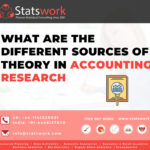Role of machine learning in sports for enhancing performance
In brief:
- In the era of automation and artificial intelligence, works are being simulated to reduce the human effort for getting work automatically and as the field of sports is commercialized, machine learning plays a very vital role in elevating it to whole new level.
- The statistics, quantitative analysis and the pattern recognition provides a generalized result out of the present data and this is significantly impacting the every aspect of sports.
- Over the last few years, there has been a focus on data collection and utilizing the Statistical data analysis with the application of AI, machine learning and advanced data science methodologies to revolutionize the field of sports and making it an emerging business and profit making area (Van Haaren & Van den Broeck, 2014).
Role of machine learning for enhancing performance in sports
Following are some aspects of sport field in which performance can be enhanced by applying machine learning and artificial intelligence
1. Selection of the players by using machine learning.
- The performance data of the pool of players are provided to the machine learning algorithm as an input data.
- A detailed performance ranking scheme is developed based on random forest based recursive feature estimation algorithm, which after analyzing the performance data ( Data Analysis ) gives us the rank wise list of the players of different categories (S.H & S.A., 2013).
- For example, if selectors have to choose a cricket team of best playing eleven, then by using machine learning they can make a separate rank wise list of batsman, bowler, all-rounder, wicket keeper etc. From this list, selectors can easily select and compare with the suggested list of best eleven player provided by machine learning.

Figure 1 Use of machine learning in high performing player in football game
2. Helps in keeping a good check on the health of players
- Many wearable devices and mobile apps are used by the players to keep a check on the health on daily basis and are now powered with the machine learning algorithms.
- The device because of inbuilt machine learning feature is capable of tracking and analyzing small variation in order to maximize the outcome of a workout and training session. The data is recorded and stored through a phone app, which can be used to track activity and compare it with the other players (Obenshain, 2004).
- It is also provide the accurate information about the specific area which seeks more attention by providing feedback information.
- Machine learning allows the app to track performance data and offer recommendations based on user goals. The app also has a nutrition guide, workout library, and custom training programs.

Figure 3 wearable wrist watch embedded with AI
3. Can act as personal virtual coach or trainer
- It can act as a personal coach for the player, as it has a huge amount of data belonging to a particular move, so it can suggest the best possible and effective method about a single action.
- For example , in cricket there are so many methods to give a spin delivery , the player can learn the best method to deliver spin which in turn enhances the performance (Brown, 2012).

Figure 3 Train by virtual coaches in virtual reality
4. Enhancing decision making by umpires and judges
- AI and Machine Learning are also assisting the game Judges and umpires to make precise and accurate decisions. For example, Cricket uses the third umpire decision that relies on artificial intelligence-driven visualization to assist umpire in making a decision wherein the human eye cannot catch the minute level gaps or differences (Malukani et al., 2013).

Figure 4 depicting third umpire decision
5. Intensify audiences watching experience
- Machine learning helps in augmenting the viewers watching experiences by creating fully automated sports production exactly like professional sports broadcasts by using camera zoom-in and zoom-out features etc.
- For example, Wimbledon 2019 uses IBM Watson to extract player’s reactions and matches highlights to identify landmarks in the game.
- The implanted cameras with the help of AI can now pick out the highlights of game for mobile devices which brings the sports to be enjoyed on different platforms.

Figure 4 depicting a shot at tennis court
6. Facility to use experiences to augment performance
- Machine learning can now provide advanced performance analytics, from where coaches can find clips of all the winning tactics or visual analysis of every play. It gives the players and coaches a powerful tool to analyze, how they performed and to explore their opponent’s strengths and weaknesses and on this basis they can make strategies to defeat their opponents (Deep Prakash, 2016).
- For example ; In the Roland- Garros tennis tournament, Infosys has took part to develop statistical analysis, which re-orders the statistics in a live match based on their
- Influence on the result of the game
7. Analysis of statistical data and patterns
- Machine learning algorithm is used by the cricket squads to discover patterns from compiled statistical data. It can help strategists to predict the future happenings. Neural networks and random forest are some common technique used to create models.
- For example ; let machine learning and AI is implemented to take into account factors like the no. of fours , singles, sixes, strike rates , area of shots, the no. of ball faced , strong hitting area etc. against specific bowlers, all this can be used to predict match outcomes in cricket.

Figure 6 depicting the bowling pattern of a bowler by using machine learning & AI
Summary
Machine learning and AI can be used in many more ways to enhance the performance in sports and it is also got implemented significantly in this. However, the potential is there to make an in – depth analysis into different aspects and create new strategy that will further enhances the performances in future.
References
- Brown, M. (2012). Data mining techniques. [Online]. Available from: https://developer.ibm.com/technologies/analytics/articles/ba-data-mining-techniques/.
- Deep Prakash, C. (2016). A New Team Selection Methodology using Machine Learning and Memetic Genetic Algorithm for IPL-9. International Journal of Electronics,Electrical and Computational System. [Online]. Available from: https://www.researchgate.net/publication/309040318_A_New_Team_Selection_Methodology_using_Machine_Learning_and_Memetic_Genetic_Algorithm_for_IPL-9.
- Van Haaren, J. & Van den Broeck, G. (2014). Relational Learning for Football-Related Predictions. In: Latest Advances in Inductive Logic Programming. [Online]. IMPERIAL COLLEGE PRESS, pp. 237–244. Available from: http://www.worldscientific.com/doi/abs/10.1142/9781783265091_0025.
- Malukani, K., Keswani, B., Chaturvedi, S. & Nandedkar, S. (2013). Impact of Informational and Social Support Services on Patient ’ s Perceived Satisfaction from Virtual Pathology Communities. [Online]. (6). pp. 477–482. Available from: https://www.ijbamr.com/pdf/477-482.pdf.
- Obenshain, M.K. (2004). Application of Data Mining Techniques to Healthcare Data. Infection Control & Hospital Epidemiology. [Online]. 25 (8). pp. 690–695. Available from: http://citeseerx.ist.psu.edu/viewdoc/download?doi=10.1.1.534.9014&rep=rep1&type=pdf.
- S.H, M.I. & S.A., S. (2013). Intelligent heart disease prediction system using data mining techniques. International Journal of Healthcare & Biomedical Research. [Online]. 1. pp. 94–101. Available from: http://ijhbr.com/pdf/94-101.pdf.
[wce_code id=1]

 Previous Post
Previous Post Next Post
Next Post